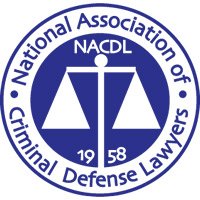DANGEROUSNESS IS RELATIVE, NOT ABSOLUTE
In a carefully reasoned order, at least one district court has held that the danger to the community addressed by the statute must be posed by the release of the defendant. Thus, if the defendant poses as great a danger to the community in jail as he does out on bail, the dangerous test under the statute has not been satisfied.
“Finally, it bears emphasis that the nature of the threatened harm to the community must be causally linked to the defendant’s release and to the defendant’s threatened behavior. That is, the issue that must be addressed is whether the defendant’s release would pose a danger to the community that would not exist if the defendant were held in pretrial preventive detention. Also, the court must focus on whether the defendant, if release, will commit serious crimes that would not otherwise occur. The court cannot constitutionally detain the defendant if the risk of harm to the community arises only from potential harm perpetrated by others, even if in some sense or to some extent in response to the defendant’s release. I thus conclude that the court must consider the substantiality of the marginal loss of safety created by the release of this defendant because of the defendant’s potential criminal conduct rather than the substantiality of the absolute level of threatened harm posed by the combination of this person’s release plus all other dangerous circumstances already existing independently of his release.” U.S. v. Phillips, 732 F.Supp. 255, 267 (D. Mass.
1990) (emphasis in original).
The government did not appeal this ruling. However, Carmen Tortora, an alleged solder of the Patriarca Family, later raised the Phillips argument before the
First Circuit, maintaining that his mob connections allowed him to be every bit as dangerous from a jail cell as on the street. Thus, he reasoned, Phillips mandated his release. The Court called this argument “mind-boggling in its implication.”
U.S. v. Tortora, 922 F.2d 880, 889 (1st Cir. 1990). Though the court did not expressly overrule Phillips, it did say that it found this principle “perverse,” and refused to release Tortora. Id. Thus, the continued vitality of Phillips is questionable.
GOVERNMENT MUST MEET BURDEN OF “CLEAR AND CONVINCING” EVIDENCE AS TO DANGEROUSNESS
The “statute clearly requires that a finding that a defendant should be detained prior to trial because he is a danger to the community should be supported by clear and convincing evidence.” U.S. v. Martin-Trigona, 779 F.2d 35 (3rd Cir. 1985). This standard of “clear and convincing” evidence requires more proof than probable cause or even preponderance of the evidence, although less than the proof beyond a reasonable doubt that is required to demonstrate guilt. Chimurenga, 760 F.2d 400; Fortna, 769 F.2d at 405.
“[I]t was correct to place the burden of persuasion on the government. This would be proper even were the rebuttable presumption to apply…Thus, in either event the government continued to have the burden to prove by clear and convincing evidence that Chimurenga was dangerous…The ‘clear and convincing evidence’ with respect to a defendant’s danger to the community required by §3142(f)(2)(B) means something more than ‘preponderance of the evidence,’ and something less than ‘beyond a reasonable doubt.’ See Addington v. Texas, 441
U.S. 418, 431 (1979). To find danger to the community under this standard of proof requires that the evidence supports such a conclusion with a high degree of certainty.” Chimurenga, 760 F.2d at 405.
STANDARD APPLIED
Where the government’s proof of dangerousness is “credible and clear and convincing” then the statutory presumptions have not been sufficiently rebutted.
U.S. v. Rodriguez, 803 F.2d 1102 (11th Cir. 1986).
But see U.S. Millan, 4 F.3d 1038 (2nd Cir. 1985);
U.S. v. McGlothan, No. H-82-198 (S.D. Tex. Jan. 25, 1985)
(stating that prior felony convictions are not equated with “dangerousness”);
U.S. v. Hall, 651 F. Supp. 13 (N.D.N.Y. 1985) (noting that defendant’s showing that he was merely a “factory worker” and not a ringleader in a drug manufacturing scheme, that he had no prior record, that he had substantial ties in the community even though he was a Colombian citizen and that he was not a danger was sufficient to entitle him to bail).
See also U.S. v. Gerard, 664 F. Supp. 203 (E.D. Pa. 1987) (increasing of penalty for charged offenses could be considered in determining whether defendant was presumptively dangerous and could be detained pending trial).
INDICTMENT MAY RAISE PRESUMPTION
The Fifth Circuit has held that the presumption against pretrial release arises when a defined drug crime is charged in the indictment. U.S. v. Trooper, 809 F.2d 1107 (5th Cir. 1987) (stating an indictment alleging possession of 12,000 tablets of MDMA, or ecstasy raises presumption).
See also U.S. v. Volksen, 766 F.2d 190 (5th Cir. 1985);
U.S. v. Payne, 660 F. Supp. 288 (E.D. Mo.), aff’d, 822 F.2d 1098 (8th Cir. 1987).
HEARSAY MAY BE CONSIDERED
Numerous courts have held that magistrates and trial judges may rely on hearsay evidence in denying release under the Act. In U.S. v Acevedos-Ramos, 755 F.2d 203 (1st Cir. 1985), the trial court denied bail based in part on hearsay. In affirming the trial court decision, the First Circuit concluded that:
“…Congress in enacting the new Bail Act, did not change pre- existing law, which, as a general matter, allowed a magistrate or judge to consider hearsay evidence and to rest a determination upon that evidence where it is sufficiently reliable.” Acevedos- Ramos, 755 F.2d at 208.
See also Fortna 769 F.2d 243 (5th Cir. 1985);
U.S. v. Cardenas, 784 F.2d 937 (9th Cir. 1986);
U.S. v. Accefuro, 783 F.2d 387 (3rd Cir. 1986);
U.S. v. Fisher, 618 F. Supp. 536 (E.D. Pa.), aff’d 782 F.2d 1032
(3rd Cir. 1985).
HOWEVER, HEARSAY MAY NOT BE SUFFICIENT
While it may be true that “hearsay evidence is admissible,” Fortna 769 F.2d 243 (5th Cir. 1985), where we are dealing with such serious questions as a presumptively innocent individual’s liberty, great care should be accorded to the process by which such a decision is made and as to meeting the burden of “clear and convincing evidence,” hearsay evidence may be sufficient. Fisher, 618 F. Supp. At 537-8; U.S. v. Ridinger, 623 F. Supp. 1386 (W.D. Mo. 1985).
“It must be remembered that we are dealing with the deprivation of the liberty of a citizen of the United States who is presumed to be innocent. In my judgment the clear and convincing evidence requirement rightly places a heavy burden upon the Government before this radical interference with freedom is imposed.”
The Government here again offered only hearsay testimony. That testimony consisted of public officers repeating what an informer had told them and in some instances what another police officer had told the witness the informer had told him..It is common experience of mankind that repetition of conversations, no matter how good the intention of the narrator may be, is subject to twists of wishful thinking, of interpretation or substitution of words or differences in phraseology,– in short, the conveyance of a completely erroneous version of…the actual conversation…All of the foregoing glaring deficiencies in the Government’ proof
seem to indicate that the Government treats deprivation of liberty as an automatic sequel [sic] of an indictment and that the deprivation of an individual’s liberty is not a very serious thing. I disagree with the Government and I find that its evidence falls far short of the clear and convincing standards rightly demanded by the Act.” Fisher at 537-8.
Moreover, the Bail Reform Act, 18 U.S.C §3142(f) expressly guarantees an accused the right to “cross-examine” witnesses against him to testify to present witnesses on his behalf, and to present information by proffer. These procedural safeguards were the reason the Supreme Court upheld the Act against a facial constitutional challenge. Referring to the hearing as a “full blown adversarial hearing” involving “extensive safeguards” the Supreme Court decision supports the motion that an accused’s right to confront his accusers should significantly limit the government’s ability to rely upon hearsay evidence. Salerno, 481 U.S.
739 (1987).
STATEMENTS MADE TO CURRY FAVOR WITH POLICE
Moreover, Courts have held that “hearsay” statements made by an individual in custody to “curry favor” with police are not sufficiently reliable to constitute probably cause. U.S. v. Martin, 615 F.2d 318, 325 (5th Cir. 1980); U.S. v.
Koloziej, 712 F.2d 975, 978 (5th Cir. 1983).
See also U.S. v. Sarniento-Perez, 633 F.2d 1092, 1096 (5th Cir. 1980);
U.S. v. Gonzalez, 559 F.2d 1271, 1273 (5th Cir. 1977).
“…while the statements were against the informants’ penal interests, this Court has held that tips made to curry favor with the police, although they ‘do not eliminate the residual risk and opprobrium of having admitted criminal conduct, they certainly make the declaration less reliable.’” Koloziej at 978.











